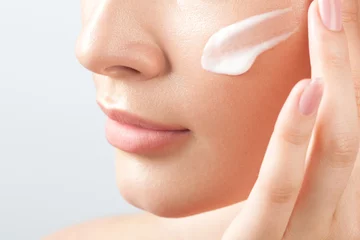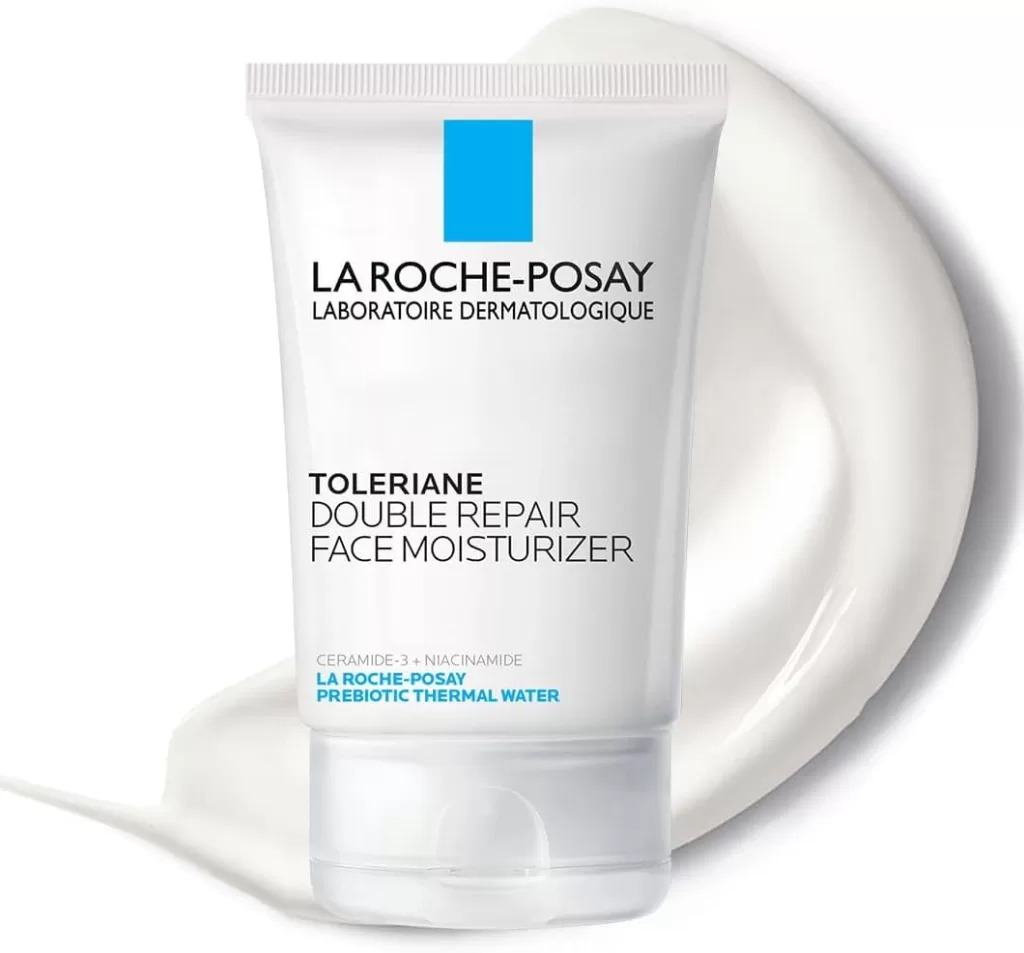Discover the Best Face Creams for Ultimate Hydration of Dry Skin
Struggling with dry, flaky skin? You’re not alone. Discover the best dermatologist-recommended face creams to hydrate, soothe, and restore your skin’s natural glow.

Understanding Dry Skin and Its Needs
Dry Skin and How to Treat It
Dry skin occurs when your skin lacks sufficient oil (sebum) or moisture, disrupting its natural barrier function. This imbalance can be caused by factors like cold weather, low humidity, harsh skincare products, aging, or underlying skin conditions. When the skin is unable to retain adequate moisture, it often leads to the following symptoms:
- Flaking and peeling: The skin’s surface becomes dry and begins to shed, leading to a rough, uneven texture.
- A tight or uncomfortable sensation: A common sign of dehydration, making the skin feel stiff or stretched.
- Increased sensitivity: A compromised moisture barrier makes the skin more prone to irritation and reactions.
- Redness or irritation: Dry skin is often inflamed, leading to visible redness and discomfort.
The Solution: Nourishing Your Skin
To effectively combat dry skin, it’s essential to replenish moisture and restore the skin’s natural barrier. This can be achieved by using creams formulated with three key types of ingredients:
- Humectants: Ingredients like hyaluronic acid and glycerin attract water from the environment and deeper layers of the skin, providing immediate hydration.
- Emollients: Natural oils, shea butter, and ceramides soften and smooth the skin’s surface, improving texture and elasticity.
- Occlusives: Ingredients like petrolatum, beeswax, or dimethicone create a protective seal on the skin’s surface, locking in moisture and preventing water loss.
By incorporating creams rich in humectants, emollients, and occlusives, you can effectively restore your skin’s moisture balance, alleviate dryness, and achieve a healthier, more comfortable complexion. Regular use of these nourishing products helps strengthen the skin barrier, reducing sensitivity and preventing future dryness.

What Causes Dry Skin?
- Dry skin, also known as xerosis, occurs when the skin loses its natural moisture and oils, leading to tightness, flakiness, and irritation. Several factors can contribute to this condition:
- Cold or Dry Weather:
- Low humidity levels and cold temperatures strip moisture from the skin, disrupting its natural barrier. This is especially common during winter months or in arid climates.
- Over-Washing or Using Harsh Cleansers:
- Frequent washing, especially with hot water and harsh soaps, can remove the skin’s natural oils. This weakens the skin barrier, making it harder for the skin to retain moisture.
- Skin Conditions Like Eczema or Psoriasis:
- Chronic skin conditions such as eczema (atopic dermatitis) and psoriasis can impair the skin’s ability to retain moisture, leading to persistent dryness, redness, and irritation.
- Dehydration and Lack of Essential Fatty Acids:
- Not drinking enough water or consuming a diet low in essential fatty acids (like omega-3s) can compromise the skin’s lipid barrier. This barrier is crucial for locking in moisture and maintaining hydration.
- Other contributing factors include aging (as skin produces less oil over time), prolonged exposure to air conditioning or heating, and certain medications. Understanding these causes can help in adopting the right skincare routine and lifestyle changes to restore and maintain healthy, hydrated skin.
What to Look for in a Moisturizer?
Choosing the right moisturizer is essential for maintaining healthy, hydrated skin. Dermatologists recommend looking for products that contain a combination of key ingredients designed to address different aspects of skin hydration and barrier function. Here’s a breakdown of what to prioritize:
- Humectants
- Examples: Hyaluronic acid, glycerin
- Function: Humectants attract moisture from the environment and bind it to the skin, ensuring deep hydration and a plump, dewy appearance.
- Why It Matters: These ingredients are ideal for drawing water into the skin, making them especially beneficial for dry or dehydrated skin types.
- Emollients
- Examples: Shea butter, ceramides
- Function: Emollients work to soften and smooth the skin by filling in gaps between skin cells, improving texture and elasticity.
- Why It Matters: They help repair the skin’s natural barrier, making them essential for soothing dry, flaky, or irritated skin.
- Occlusives
- Examples: Petrolatum, squalane
- Function: Occlusives form a protective layer on the skin’s surface to lock in moisture and prevent water loss.
- Why It Matters: These ingredients are crucial for sealing in hydration and protecting the skin from external irritants, making them ideal for very dry or sensitive skin.
By selecting a moisturizer that combines humectants, emollients, and occlusives, you can ensure comprehensive hydration, improved skin texture, and a strengthened moisture barrier. This multi-ingredient approach helps address dryness, irritation, and dehydration while promoting a healthy, radiant complexion.
Best Face Creams: Hydration Solutions for Dry Skin
Dry and peeling skin requires extra care, and choosing the right face cream can make all the difference. This guide explores the best face creams for deep hydration, addressing the root causes of dryness while leaving your skin smooth and glowing.
Aveeno Face Calm+Restore Oat Gel Moisturiser (1x 50ml)
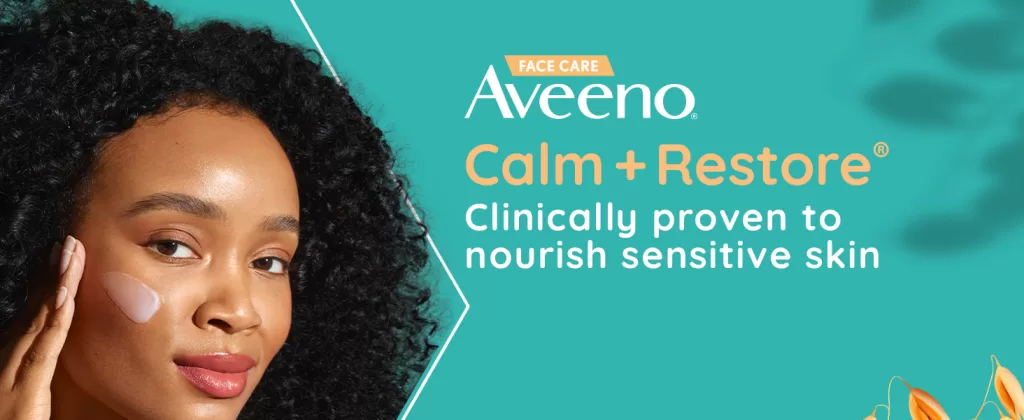
Why Choose Creams Over Lotions for Dry Skin?
When it comes to hydrating dry skin, creams often outshine lotions, and here’s why:
- Texture and Consistency: Creams are typically thicker than lotions. This denser consistency ensures a more substantial barrier on the skin, which helps lock in moisture longer.
- Oil Content: Creams generally contain a higher oil concentration compared to lotions. This increased oil content is crucial for providing the richer moisture that dry skin craves.
- Long-lasting Hydration: Due to their composition, creams are better at retaining moisture throughout the day. They form a more effective seal, preventing water loss from the skin’s surface.
- Deep Nourishment: The richer formulation of creams means they can penetrate the skin more effectively, reaching deeper layers and offering intensive nourishment.
In essence, if you’re struggling with dry skin, switching from lotion to cream can be a game-changer, providing the deep and lasting hydration your skin needs.
How Do External Factors Like Climate and Humidity Affect Skin Hydration?
Our skin’s hydration levels are constantly influenced by external conditions. Climate and humidity are major players in determining how moisturized, or dry, your skin feels.
Climate can have a dramatic impact on skin health. Cold weather, for instance, often leads to dry skin because the air during winter months holds less moisture. This lack of humidity results in increased skin dehydration and irritation.
Humidity, or the amount of moisture in the air, plays a crucial role as well. In low-humidity environments, such as desert regions or during the winter months, the air pulls moisture away from your skin, leading to dryness and flakiness. Conversely, high-humidity climates help maintain skin’s moisture by slowing water loss, often making the skin feel more supple.
Additional factors, like exposure to harsh winds or artificial heating, can exacerbate these effects by stripping away the skin’s natural oils, leaving it even more vulnerable and dehydrated. Therefore, adapting your skincare routine to these external conditions is essential for maintaining balance and hydration year-round.
The Importance of Inclusive Testing in Skincare Product Evaluation
When it comes to skincare, the decision to purchase a product is uniquely personal. Whether you’re on the hunt for a moisturizer to combat stubborn dryness or simply curious about the latest innovations in hair care, having information tailored to your specific needs is crucial. This is where the value of a diverse team of testers becomes evident.
- Representation Across Age and Skin Concerns
Skincare needs vary widely with age. A product might perform exceptionally well for youthful skin but not meet the requirements of more mature skin types. By including testers across different age groups, brands ensure their claims hold true for everyone – from those in their twenties to those enjoying life beyond their fifties. - Accommodating Varied Skin Tones and Types
Skin concerns such as sensitivity, hyperpigmentation, and acne can present differently across various skin tones and types. A diverse testing team that mirrors this range can better evaluate how a product performs universally, thus ensuring recommendations that don’t leave anyone out. - Catering to Different Hair Textures
Just as with skin, hair care products demand thorough examination across different textures. Curly, straight, coiled – each texture may react uniquely to shampoos, conditioners, and treatments. Testers with a diverse array of hair types help brands identify which products truly deliver as promised. - Gender Inclusivity in Beauty
Recognizing that skincare and beauty transcend gender is crucial. Inclusive testing that respects varied gender identities leads to richer insights and product recommendations that are relevant to all consumers.
In essence, a broad spectrum of perspectives enhances the credibility of skincare evaluations. It ensures that product endorsements are based on comprehensive, real-world usage experiences, reflecting a commitment to serving all consumers equitably.
Top Recommended Face Creams for Dry Skin
Finding the right face cream for dry skin can be a personalized journey, as everyone’s skin is unique. While there are many highly recommended products, it’s important to consider your skin’s specific needs, experiment with different options, and seek professional guidance when necessary. Here’s a holistic approach to choosing the best face cream for dry skin:
Key Ingredients to Look For
- Humectants: Hyaluronic acid, glycerin
- Attract and retain moisture for deep hydration.
- Emollients: Shea butter, ceramides, fatty acids
- Smooth and soften the skin while repairing the moisture barrier.
- Occlusives: Petrolatum, squalane, dimethicone
- Lock in moisture and protect the skin from environmental stressors.
1. CeraVe Moisturising Face and Body Cream
- Key Benefits:
- Contains ceramides (1, 3, and 6-II) to restore the skin’s natural barrier and prevent moisture loss.
- Features hyaluronic acid to attract and retain hydration in the skin.
- Formulated with MVE Technology for 24-hour hydration.
- Why It Works:
- The non-greasy, non-comedogenic formula is gentle enough for sensitive, dry, or compromised skin.
- It’s fragrance-free and dermatologist-tested, making it suitable for all skin types, including eczema-prone skin.
- Pro Tip:
- Apply immediately after cleansing or showering to lock in moisture and maximize absorption.
- Use on both face and body for consistent hydration and barrier repair.
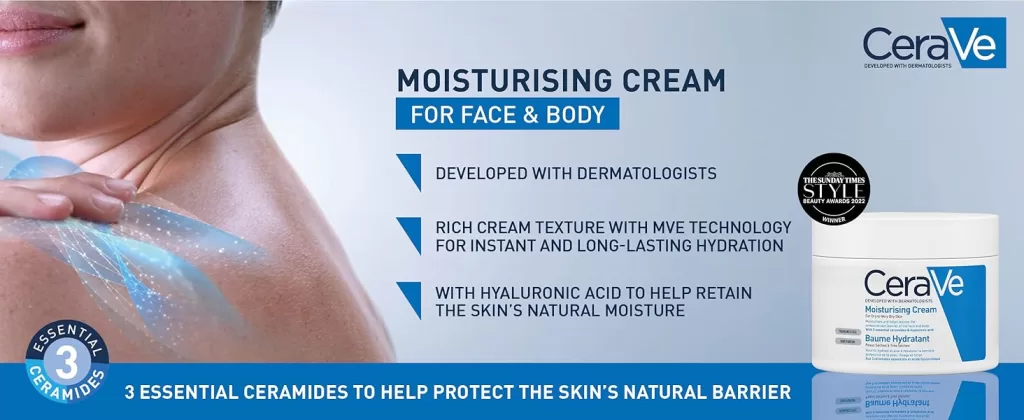
2. La Roche-Posay Toleriane Double Repair Face Moisturizer
- Key Benefits:
- Contains niacinamide (vitamin B3) to soothe irritation, reduce redness, and improve skin texture.
- Infused with prebiotic thermal water to support the skin’s microbiome and enhance hydration.
- Includes ceramides and glycerin to repair the moisture barrier.
- Why It Works:
- The lightweight, oil-free formula is designed to balance the skin’s natural flora while providing long-lasting hydration.
- It’s fragrance-free, paraben-free, and non-comedogenic, making it ideal for sensitive or redness-prone skin.
- Pro Tip:
- Use as part of your morning routine to prep your skin for sunscreen or makeup.
- Pair with La Roche-Posay’s gentle cleansers for a complete skincare regimen.
3. Weleda Skin Food Original Ultra-Rich Cream
- Key Benefits:
- A natural formula featuring calendula extract (anti-inflammatory) and chamomile extract (soothing).
- Enriched with beeswax, sunflower seed oil, and lanolin for intense hydration.
- Provides a protective barrier to lock in moisture and repair very dry, rough areas.
- Why It Works:
- The ultra-rich, emollient texture is perfect for dry patches, elbows, knees, and even cuticles.
- Its natural, plant-based ingredients make it a favorite for those seeking clean beauty options.
- Pro Tip:
- Use sparingly on the face as a dewy makeup base or overnight mask for extra hydration.
- Apply to hands and feet before bed for soft, nourished skin by morning.

4. First Aid Beauty Ultra Repair Cream
- Key Benefits:
- Contains colloidal oatmeal to soothe irritation and calm sensitive skin.
- Features shea butter and ceramides to deeply hydrate and repair the skin barrier.
- Free from parabens, sulfates, and synthetic fragrances.
- Why It Works:
- The hypoallergenic, fragrance-free formula is ideal for sensitive, eczema-prone, or reactive skin.
- Its rich yet lightweight texture absorbs quickly without leaving a greasy residue.
- Pro Tip:
- Use as an overnight treatment for an intense moisture boost.
- Keep a travel-sized version in your bag for on-the-go hydration during colder months.
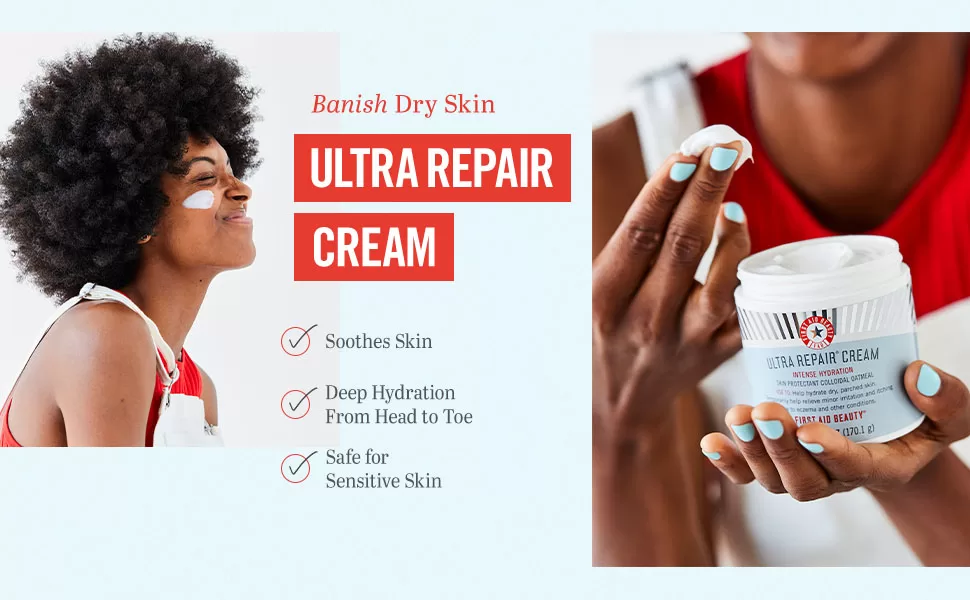
5. Clinique Moisture Surge Intense 72H Lipid-Replenishing Hydrator
Key Benefits:
- Contains aloe vera to soothe and hydrate, along with a lipid blend to replenish the skin’s natural oils.
- Features hyaluronic acid for long-lasting hydration and a plumping effect.
- Lightweight gel-cream texture that absorbs quickly.
Why It Works:
- The 72-hour hydration claim ensures your skin stays moisturized throughout the day.
- Suitable for all skin types, including oily and combination skin, due to its non-greasy finish.
Pro Tip:
- Use as a primer under makeup for a smooth, hydrated base.
- Apply a thicker layer as an overnight mask for an extra hydration boost.
Final Thoughts
Each of these products offers unique benefits tailored to different skin needs. Whether you’re looking for a lightweight gel-cream, a rich emollient, or a soothing barrier repair cream, there’s an option for everyone. Always consider your skin type, concerns, and preferences when choosing a moisturizer, and don’t hesitate to consult a dermatologist for personalized recommendations.
A Holistic Approach to Choosing the Right Cream
- Understand Your Skin’s Needs
- Consider factors like sensitivity, severity of dryness, and any underlying skin conditions (e.g., eczema or rosacea).
- Trial and Error
- Start with sample sizes or travel versions of recommended creams to test how your skin responds.
- Patch test new products on a small area of your skin before full application.
- Incorporate Professional Advice
- Consult a dermatologist to identify your skin type and any specific concerns.
- Seek recommendations for prescription-strength creams if over-the-counter options aren’t effective.
- Lifestyle and Skincare Routine
- Pair your moisturizer with a gentle cleanser and hydrating serum for optimal results.
- Avoid hot water and harsh exfoliants, which can exacerbate dryness.
Final Thoughts
While the creams listed above are highly recommended for dry skin, the best choice ultimately depends on your skin’s unique characteristics. A combination of research, experimentation, and professional guidance will help you find the perfect product to achieve hydrated, healthy, and glowing skin.
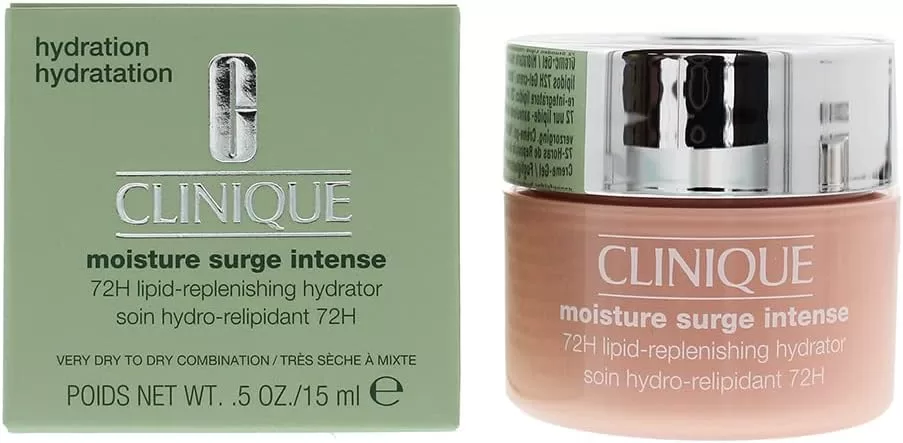
Clinique Moisture Surge Intense 72H Lipid-Replenishing Hydrator 15ml Very Dry To Dry Combination Skin
How to Choose the Best face creams for Your Skin
Selecting the right face cream is crucial for maintaining healthy, balanced, and radiant skin. With countless options available, it’s important to consider your skin’s unique needs, the ingredients in the product, and your skin type. Here’s an expanded guide to help you make an informed choice:
1. Consider Ingredients
The ingredients in a face cream determine its effectiveness. Look for formulations that address your specific skin concerns:
- For Hydration:
- Hyaluronic Acid: Attracts and retains moisture, plumping the skin and reducing the appearance of fine lines.
- Glycerin: A humectant that draws water into the skin, keeping it hydrated and soft.
- Aloe Vera: Soothes and hydrates while providing antioxidant benefits.
- For Repair:
- Ceramides: Restore the skin’s natural barrier, preventing moisture loss and protecting against environmental damage.
- Niacinamide (Vitamin B3): Reduces redness, improves elasticity, and strengthens the skin barrier.
- For Soothing:
- Colloidal Oatmeal: Calms irritation, reduces itching, and is ideal for sensitive or eczema-prone skin.
- Calendula: Known for its anti-inflammatory properties, it helps soothe and heal irritated skin.
2. Match Your Skin Type
Different skin types have varying needs, so it’s essential to choose a cream that aligns with yours:
- Extremely Dry Skin:
- Opt for rich, oil-based creams or balms with ingredients like shea butter, squalane, or petrolatum. These provide intense hydration and create a protective barrier to lock in moisture.
- Combination Skin:
- Choose lightweight, non-greasy formulas that hydrate without clogging pores. Look for gel-creams or water-based moisturizers with hyaluronic acid or glycerin.
- Oily or Acne-Prone Skin:
- Use oil-free, non-comedogenic creams that won’t clog pores. Ingredients like niacinamide and salicylic acid can help regulate oil production and prevent breakouts.
- Sensitive Skin:
- Select fragrance-free, hypoallergenic creams with calming ingredients like colloidal oatmeal, aloe vera, or chamomile.
3. Fragrance-Free Formulas
Fragrances, whether natural or synthetic, can irritate the skin, especially for those with sensitive or reactive skin. To minimize the risk of irritation:
- Choose unscented or fragrance-free products.
- Look for labels that say “hypoallergenic” or “dermatologist-tested.”
4. Additional Tips for Choosing the Right Cream
- Check for SPF: If you’re selecting a daytime moisturizer, consider one with broad-spectrum SPF to protect your skin from UV damage.
- Read Reviews: Look for feedback from users with similar skin types or concerns to gauge effectiveness.
- Patch Test: Always test a new product on a small area of your skin to ensure it doesn’t cause irritation or breakouts.
- Consult a Dermatologist: If you have persistent skin issues or are unsure about your skin type, seek professional advice for personalized recommendations.
Final Thoughts
The best face cream for your skin is one that addresses your specific concerns, suits your skin type, and is free from potential irritants. By focusing on the right ingredients, matching the product to your skin type, and opting for fragrance-free formulas, you can achieve a healthy, hydrated, and glowing complexion. Remember, skincare is personal—what works for someone else may not work for you, so don’t be afraid to experiment and adjust your routine as needed.
Benefits of Using a Moisturizer with SPF for Dry Skin
Moisturizers with SPF offer a dual-action benefit that is ideal for those with dry skin. Here’s why adding it to your skincare routine is a smart move:
- Hydration Boost: Dry skin desperately needs hydration, and a moisturizer provides the essential moisture to maintain skin elasticity and suppleness. These creams often contain emollients and humectants that help lock in moisture, keeping your skin soft and smooth throughout the day.
- Sun Protection: Incorporating SPF into your moisturizer shields your skin from harmful UV rays. This is crucial because sun exposure can exacerbate dryness and lead to premature aging and sun damage. Using products with SPF helps prevent these issues without adding an extra step to your routine.
- Convenience: With a moisturizer that includes SPF, you simplify your skincare process. There’s no need to apply multiple products, which can sometimes be heavy or clogging, especially for dry skin. One product means efficiency and less time spent getting ready each morning.
- Prevents Irritation: Dry skin is more susceptible to irritation, and sun exposure can worsen this condition. An SPF moisturizer forms a barrier against environmental stressors, reducing the chances of irritation.
- Anti-Aging Benefits: Regular use of SPF helps combat the signs of aging. Sun exposure accelerates the development of fine lines and wrinkles, and a good SPF moisturizer can slow this process, keeping your skin looking youthful.
Find What Works for You
The best part is that there are numerous formulations available. Whether you prefer a lightweight lotion for daily wear or a richer cream for deep hydration, there’s something to suit every preference. Explore different options and see what feels best on your skin, or consult a skincare professional for personalized advice.
Remember, integrating a moisturizer with SPF into your regimen offers daily protection and hydration, essential for maintaining healthy, radiant skin.
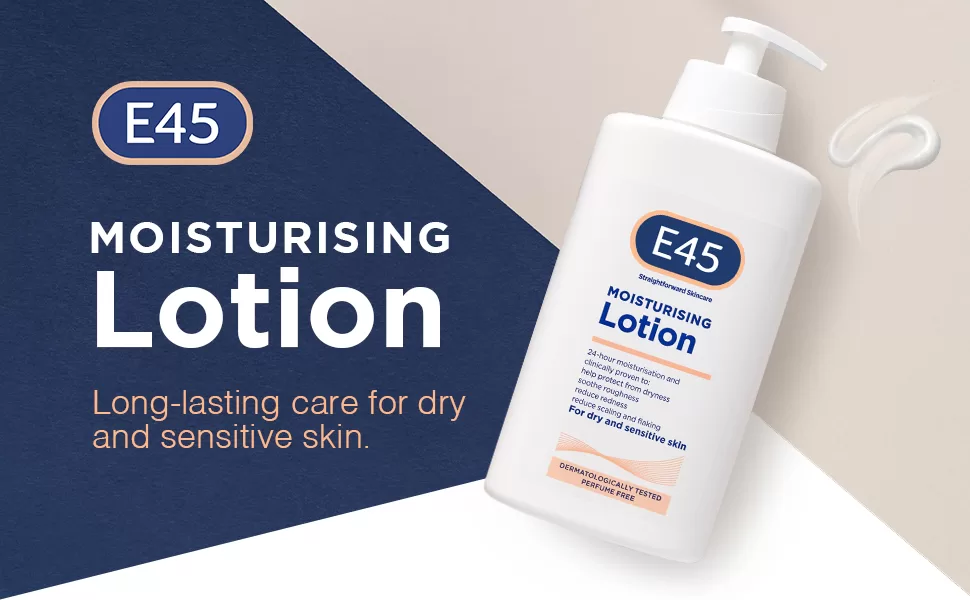
How Do Face Moisturizers Help Minimize Wrinkles and Blemishes?
Facial moisturizers play a crucial role in maintaining youthful and radiant skin. They do more than just hydrate; they offer multiple benefits to combat the signs of aging, such as wrinkles and blemishes. Here’s how they make a difference:
- Hydration: Moisturizers lock in moisture, ensuring your skin stays supple and plump. This hydration minimizes the visibility of fine lines, making them appear less pronounced.
- Barrier Protection: Quality face moisturizers create a protective layer on the skin’s surface. This barrier helps protect skin from external aggressors like pollution and harsh weather, which can contribute to premature aging.
- Promoting Skin Repair: Many moisturizers contain active ingredients like peptides and antioxidants. These ingredients help repair and rejuvenate skin cells, leading to a smoother, more even complexion over time.
- Balancing Oil Production: Proper moisturizing can balance the skin’s oil production, reducing breakouts and blemishes. Non-comedogenic formulas, in particular, prevent pore blockages, keeping skin clear and radiant.
Incorporating a premium facial moisturizer that suits your skin type into your daily skincare routine can dramatically improve your skin’s texture and appearance over time. By consistently using a hydrating product, you’re investing in healthy, vibrant skin that’s resilient against the signs of aging.
Best Times to Use Face Cream for Optimal Results
Using face cream at the right times can significantly enhance its effectiveness, ensuring your skin stays hydrated, protected, and healthy throughout the day and night. Here’s a detailed guide on when and how to use face creams, along with product recommendations for each scenario:
1. Morning: Lightweight Cream Under Sunscreen
- Why: Morning application helps lock in moisture and creates a protective barrier against environmental stressors like pollution and UV rays. A lightweight formula ensures it layers well under sunscreen without feeling heavy or greasy.
- How to Use: Apply after cleansing and toning, followed by a broad-spectrum sunscreen.
- Recommended Products:
- Neutrogena Hydro Boost Water Gel: A lightweight, hyaluronic acid-based gel that provides instant hydration without clogging pores.
- Olay Regenerist Micro-Sculpting Cream: A nourishing yet lightweight cream that hydrates and plumps the skin.
- La Roche-Posay Toleriane Ultra Moisturizer: A soothing, fragrance-free option for sensitive skin.
2. Night: Richer Cream for Overnight Repair
- Why: Nighttime is when your skin undergoes repair and regeneration. A richer, more emollient cream helps replenish moisture, repair the skin barrier, and address concerns like dryness or fine lines.
- How to Use: Apply after cleansing and applying any serums or treatments. Gently massage into the skin to boost circulation and absorption.
- Recommended Products:
- CeraVe Moisturizing Cream: Contains ceramides and hyaluronic acid to restore the skin barrier and lock in moisture.
- Kiehl’s Ultra Facial Overnight Hydrating Mask: A deeply hydrating mask that works while you sleep.
- First Aid Beauty Ultra Repair Cream: A rich, soothing cream with colloidal oatmeal for intense hydration and repair.
3. During Winter: Reapply as Needed
- Why: Cold, dry air can strip moisture from the skin, leading to tightness, flakiness, and irritation. Reapplying a nourishing cream during the day helps combat these effects.
- How to Use: Keep a travel-sized cream in your bag and reapply to dry areas (like cheeks and lips) as needed.
- Recommended Products:
- Eucerin Advanced Repair Cream: A non-greasy, fast-absorbing formula that provides long-lasting hydration.
- Aveeno Repairing Cica Cream: Infused with centella asiatica to soothe and repair dry, irritated skin.
- Weleda Skin Food: A thick, ultra-nourishing cream perfect for very dry or chapped skin.
Additional Tips for Optimal Results
- Layer Products Correctly: Always apply face cream after serums and treatments but before sunscreen (in the morning) or occlusive products like facial oils (at night).
- Adjust Based on Season: Switch to richer creams in winter and lighter formulas in summer to match your skin’s changing needs.
- Listen to Your Skin: If your skin feels tight or dry, don’t hesitate to reapply your cream, especially during harsh weather conditions.
By tailoring your face cream usage to the time of day and seasonal changes, you can maximize its benefits and keep your skin hydrated, healthy, and radiant year-round.

Unlock Radiant Skin and Peak Fitness with an Athlete’s Diet
What is an Athlete’s Diet? An athlete’s diet is a scientifically designed nutrition plan crafted to support physical endurance, muscle recovery, and skin health. Athletes require a strategic balance of macronutrients—carbohydrates, proteins, and fats—along with targeted micronutrients that not only enhance performance but also help in maintaining radiant skin. This diet relies on research-based insights…
How to Apply Face Cream Effectively
Applying face cream correctly is just as important as choosing the right product. Proper application ensures maximum absorption, hydration, and overall effectiveness. Here’s an expanded guide to help you get the most out of your face cream:
1. Cleanse Your Skin
- Why It Matters: Cleansing removes dirt, oil, and impurities, creating a clean base for your skincare products.
- How to Do It: Use a gentle, hydrating cleanser that doesn’t strip your skin of its natural oils. Avoid harsh soaps or cleansers with sulfates, as they can dry out your skin.
- Tip: Opt for a cleanser with ingredients like glycerin or ceramides to maintain your skin’s moisture barrier.
2. Apply on Damp Skin
- Why It Matters: Applying face cream on slightly damp skin helps lock in moisture and enhances absorption.
- How to Do It: After cleansing, gently pat your face dry with a towel, leaving it slightly damp. This creates the ideal environment for your moisturizer to penetrate deeply.
- Tip: For an extra hydration boost, spritz your face with a facial mist before applying your cream.
3. Layer if Necessary
- Why It Matters: Layering products ensures your skin gets the hydration and nutrients it needs.
- How to Do It: If your skin is very dry, pair your face cream with a hydrating serum containing ingredients like hyaluronic acid or niacinamide. Apply the serum first, let it absorb for a minute, and then follow with your face cream.
- Tip: Always apply products from thinnest to thickest consistency for optimal layering.
4. Massage Gently
- Why It Matters: Massaging your face cream into your skin improves circulation, enhances absorption, and promotes a healthy glow.
- How to Do It: Use upward and outward strokes to apply the cream. Focus on areas prone to dryness, like your cheeks and forehead. Avoid tugging or pulling on delicate areas like the under-eyes.
- Tip: Use your ring finger for gentle application around the eyes, as it applies the least pressure.
5. Seal with Sunscreen (AM)
- Why It Matters: Sunscreen protects your skin barrier from UV damage, which can lead to dryness, premature aging, and irritation.
- How to Do It: In the morning, finish your routine with a broad-spectrum sunscreen (SPF 30 or higher). Apply it as the final step to seal in your moisturizer and create a protective barrier.
- Tip: Choose a sunscreen that’s lightweight and non-comedogenic to avoid clogging pores.
Additional Tips for Effective Application
- Consistency is Key: Apply face cream twice daily—once in the morning and once at night—to maintain hydration.
- Adjust for Seasons: Use a richer cream in winter and a lighter formula in summer to suit your skin’s changing needs.
- Don’t Forget Your Neck and Décolletage: Extend your application to these areas to ensure even hydration and prevent signs of aging.
By following these steps, you’ll not only maximize the benefits of your face cream but also support your skin’s overall health and appearance. Proper application, combined with the right products, can transform your skincare routine and leave your skin feeling soft, hydrated, and radiant.
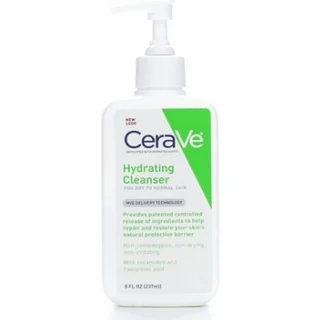
The Magic of CeraVe Hydrating Facial Cleanser
Unlock Radiant Skin with CeraVe Hydrating Facial Cleanser CeraVe Hydrating Facial Cleanser is a gentle yet effective cleanser that removes dirt, oil, and makeup without stripping away your skin’s natural moisture barrier. Why CeraVe Hydrating Facial Cleanser CeraVe is a dermatologist-recommended brand that specializes in skincare products formulated with essential ceramides. These ceramides help to…
FAQ: Best face creams for Dry Skin
1. Can face creams help peeling skin?
Yes! Look for creams with ceramides and hyaluronic acid to hydrate deeply and repair the skin barrier.
2. Is it safe to use these creams on sensitive skin?
Many of the recommended creams are fragrance-free and hypoallergenic, making them suitable for sensitive skin.
3. How often should I apply Best face creams?
Apply twice daily—morning and night—for best results.
4. Can I use a face cream as a makeup base?
Absolutely! Hydrating creams help smooth your skin and create a better canvas for makeup.
5. Do I need different creams for summer and winter?
Yes, lighter creams are better for summer, while richer creams combat the dryness of winter.
Final Thoughts: Hydration is Key
Selecting the right face cream tailored to your skin’s needs can transform dry, peeling skin into a smooth, radiant complexion. With the power of nourishing ingredients and consistent care, your skin will stay hydrated and healthy year-round.
Invest in your skin today and let your natural beauty shine!
Additional Resources:
Unveiling the Skincare Testing Process: How Experts Ensure Product Effectiveness
When it comes to evaluating skincare products, experts leave no stone unturned. Their goal is not just to test products but to provide you with reliable recommendations. Here’s how they do it:
Comprehensive Examination
Experts begin by meticulously reviewing the ingredients. They scrutinize every component to understand how it contributes to the product’s overall efficacy. This process often involves examining claims made by brands and corroborating these with existing scientific and medical research findings.
Expertise and Consultation
Collaborating with leading figures in dermatology, cosmetic chemistry, and medicine, they ensure that each ingredient and formula is beneficial and safe for use. This consultation process is crucial in verifying claims and understanding the long-term impact of skincare products.
Category-Based Assessment
To provide a well-rounded evaluation, products are analyzed across several key categories:
- Ingredients and Efficacy: Does the product deliver on its promises, and are the ingredients scientifically backed to treat specific skin issues?
- Packaging: How does the packaging preserve the product’s effectiveness and is it user-friendly?
- Fragrance: Is the scent appealing and non-irritating to sensitive skin?
- Texture: Does the product apply smoothly and feel good on the skin?
- Product Wear: How long does it last throughout the day, and how does it interact with other skincare products?
Rigorous Testing Panel
This evaluation isn’t solely based on editorial insight. Experts engage a diverse panel of in-house writers, seasoned dermatologists, and estheticians to test each product. Their collective feedback ensures that the product performs well across different skin types and conditions.
For a deeper dive, detailed methodologies on testing and evaluation are usually available, breaking down everything from lab analysis to human trials. Thus, the goal is to equip you with dependable and transparent insights into the effectiveness of skincare products.

Explore more articles like this @ Where And How Resources
If you found this article helpful, don’t forget to share it with your friends and followers!

